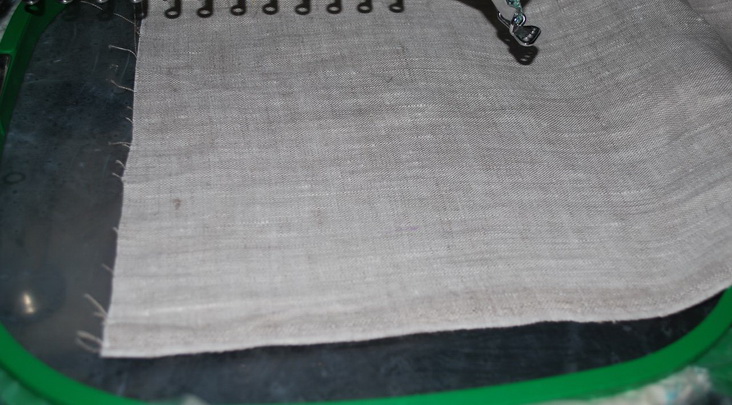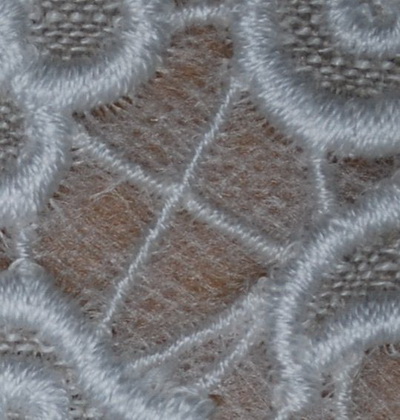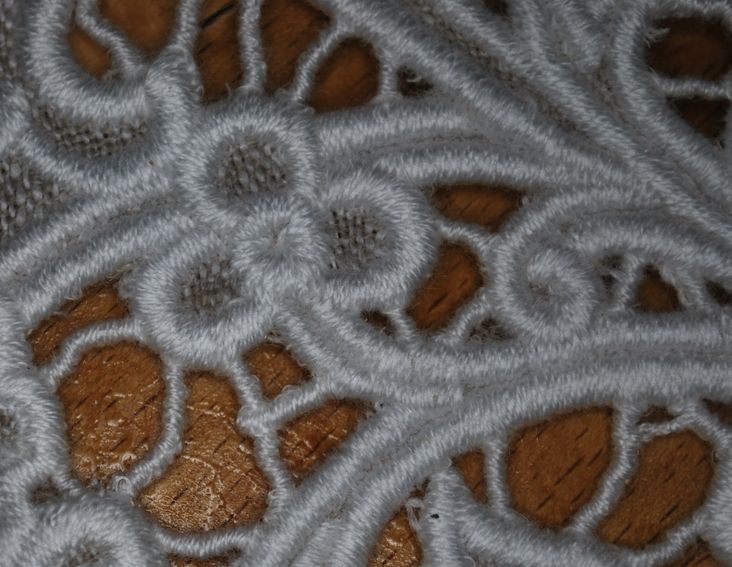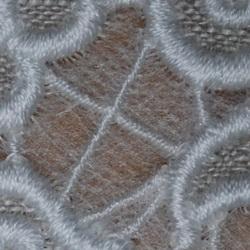Original text by: Marina Belova
About a year ago I tested all kinds of cutwork stabilizers available — water soluble and heat away one — on small pieces of lace. In those days I arrived at the conclusion that any kind of stabilizer is good for lace, because the lace patterns are relatively small, and in most cases do not require alignment. But now, after numerous trials and errors I arrived at the conclusion that for cutwork it is better to use not a water soluble film or thermogaze, but a water soluble stabilizer instead. Even despite the fact that it is easier for me to cut away pieces of film — the possibility of making a wrong cut is lesser, because the scissors glide along the film surface. Water soluble stabilizer is better for cutwork embroidery than thermogaze even despite the fact that with latter you don't have to wash the item for a prolonged time — thermogaze is too fragile and therefore not easy to hoop.
One day I've been surfing Youtube and saw a video by Deborah Jones, in which she showed how easily the fabric would attach to a water soluble film if the latter was dubbed with a wet cloth and therefore became sticky. And of course, I became excited with the idea, because in that way you don't have to hoop the fabric, just smooth it while attaching to stabilizer. Adding supporting stitches like the ones described here will be enough, but this time it's more simple, because there will be no pins:

I don't know whether we don't have the right kind of film here or did I get something wrong, but it didn't quite work out. I dubbed the film with water, and it became sticky, of course, but not enough to hold the fabric in place. The film instantly warped, became thin and loosened in the hoop — what accuracy can you expect, if the fabric can shift during the embroidery process. Then, having remembered an advice I read somewhere, I additionally sprayed the film with a temporary spray adhesive. The spray held the fabric better, but likewise was not very reliable as the fabric shifted in the hoop. So, my first attempt was unsuccessful.
That was the end of one more embroidery myth for me — the one on the possibility of embroidery without hooping.
This is the napkin I embroidered using a water soluble stabilizer:

I liked the water soluble stabilizer because it was soft and flexible, and was easy to hoop and align. It did not pucker or change its shape during the embroidery, did not warp like the film or get perforated along the edges, even when the stitch density was high. Besides, the look of the bridges surprised and embraved me. Everything that caused me trouble the last time, when I tried to find the right kind of thread and the right stitch parameters for embroidery on a film, here came out neat and good-looking on the first attempt (I used the same cotton threads and the same stitch parameters):


Truly, you understand nothing until you try, and besides, nobody will tell you anything. That's how important it is to know the types of threads and stabilizers when creating a machine embroidery design! Otherwise you won't be able to set the parameters right and it'll cause you suffering.
I never doubted that it was possible to align cutwork designs. It is not hard, even if you do it helter-skelter, like I did.
Edited by Irina




There are no reviews to display.